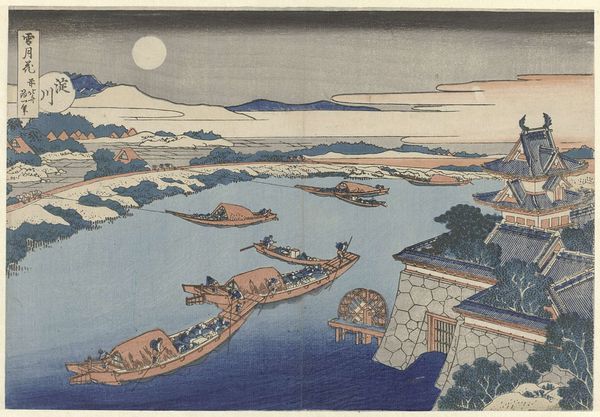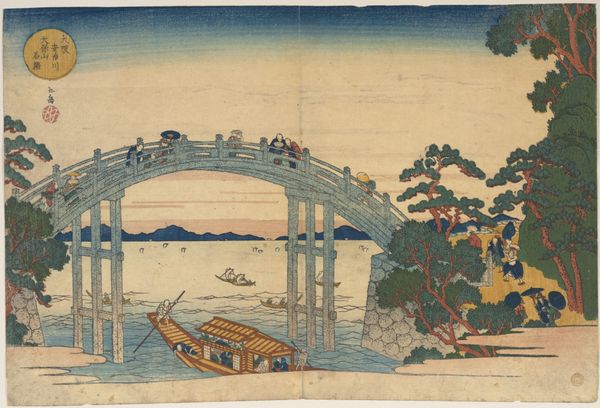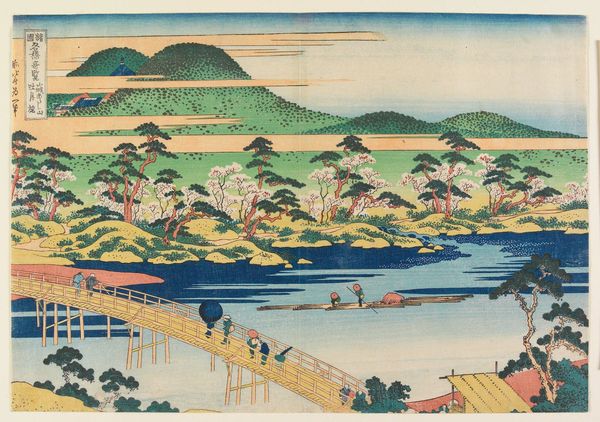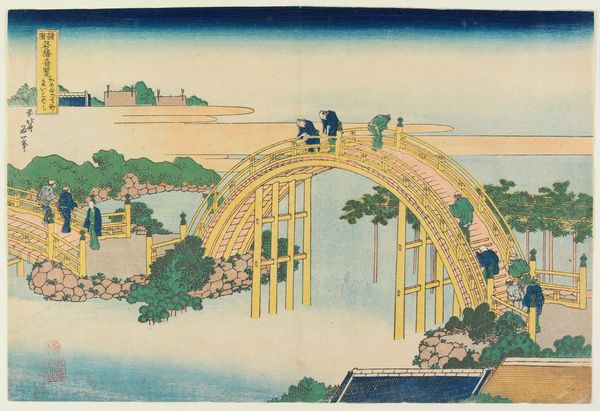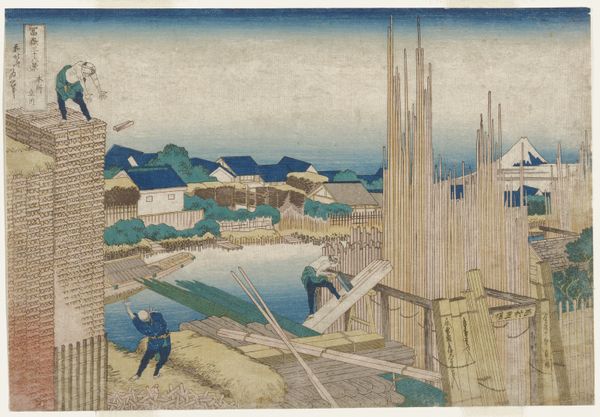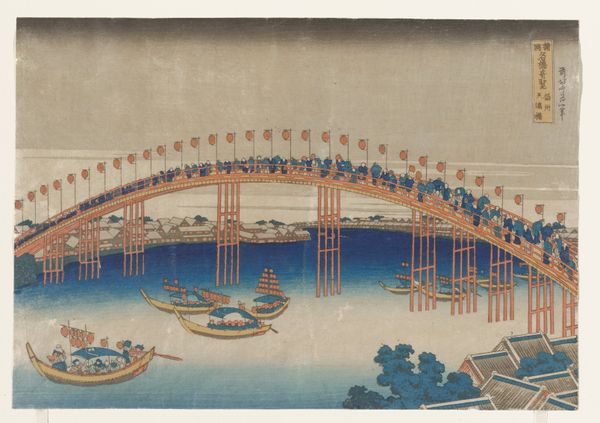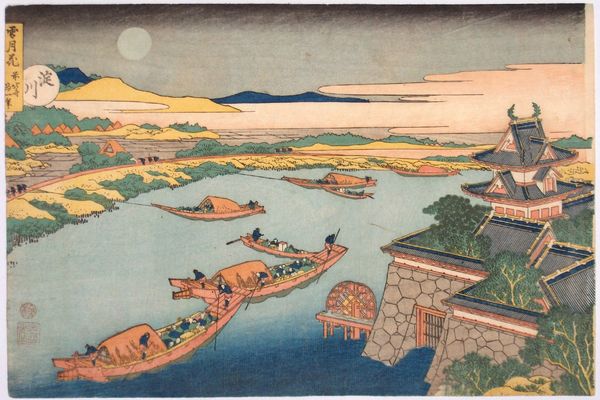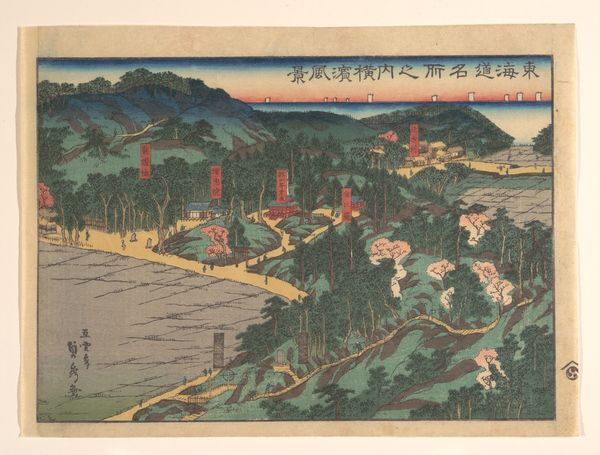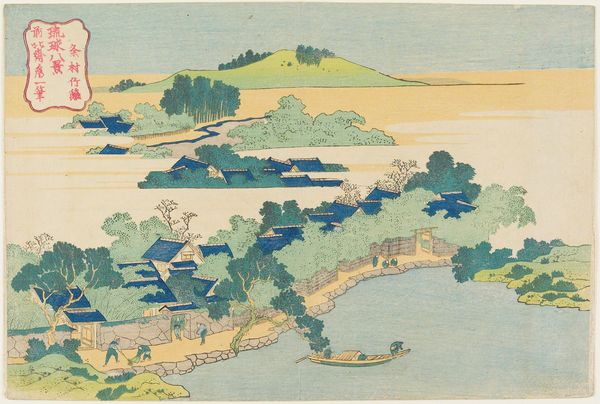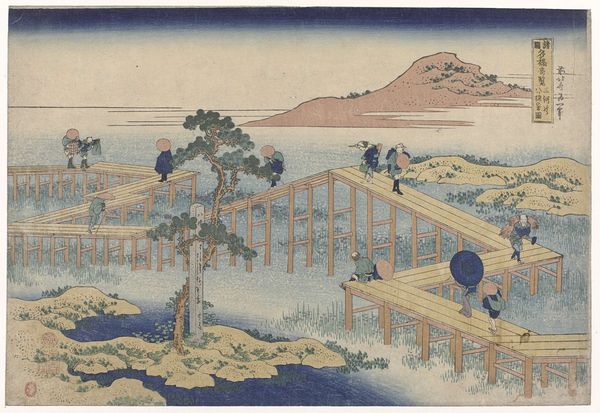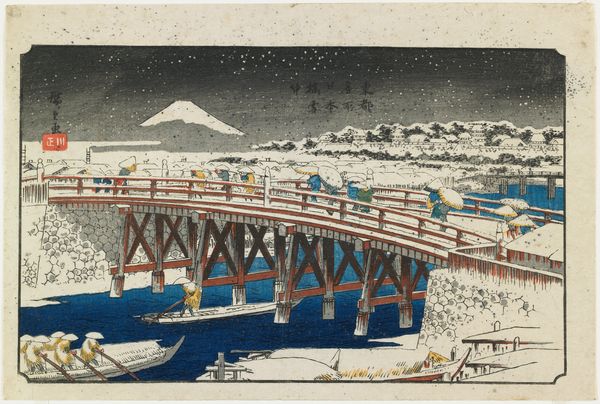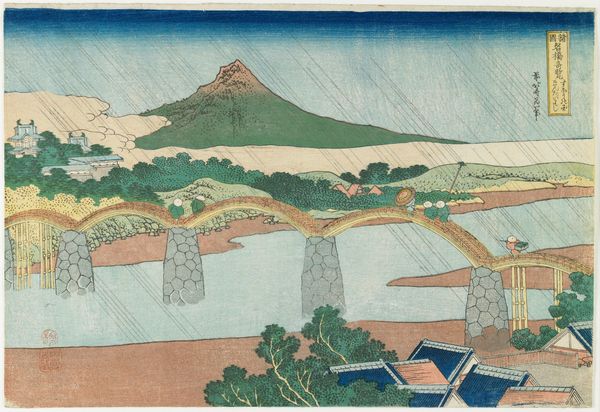
Yahagi Bridge at Okazaki on the Tōkaidō Road c. 1834
0:00
0:00
print, watercolor, ink, woodblock-print
#
water colours
# print
#
asian-art
#
landscape
#
ukiyo-e
#
japan
#
watercolor
#
ink
#
coloured pencil
#
woodblock-print
#
watercolor
Dimensions: 10 1/4 × 15 1/4 in. (26 × 38.7 cm) (image, sheet, horizontal ōban)
Copyright: Public Domain
Editor: So, this is "Yahagi Bridge at Okazaki on the Tōkaidō Road" by Katsushika Hokusai, circa 1834. It's a color woodblock print, and it feels so serene, almost like a fleeting moment captured in time. What can you tell me about this work? How would you interpret it? Curator: Well, considering the period, the work provides a fascinating lens through which to view Japan’s evolving socio-political landscape. The Tōkaidō Road wasn't just a route; it was a symbol of connection and commerce during the Edo period. How do you think the bridge itself functioned within this context? Editor: It looks like it allowed for greater access to markets, encouraged cultural exchange, and, on a deeper level, probably played a vital role in unifying diverse regions under a central government. Curator: Exactly! And Hokusai's choice to depict ordinary people crossing it daily subtly acknowledges how travel was being democratized. Prints like this, sold relatively cheaply, further democratized access to images of celebrated places and the lives of people occupying them. This is not solely a scenic view, it speaks volumes about Japan’s burgeoning public sphere. Have you considered the political implications of circulating these images? Editor: I hadn't, but now I'm thinking about how it connects everyday citizens to their society and to its imagery and how something as commonplace as a woodblock print can convey not only aesthetic value, but a unifying vision. Curator: Precisely! Consider the restrictions placed on travel at certain points in Japanese history, making this seemingly simple depiction quite radical. Seeing a print of such a bridge at a celebrated location could, at one level, have a profound effect on an individual's perception of the world and perhaps fuel the desire to experience that space personally, thereby subtly altering Japan’s very social fabric. Editor: That's so interesting! I see now how this print, which I initially saw as just a pretty landscape, has so much to say about the era it was created in. Curator: Yes! It showcases how socio-political forces shape both the production and reception of art.
Comments
No comments
Be the first to comment and join the conversation on the ultimate creative platform.

